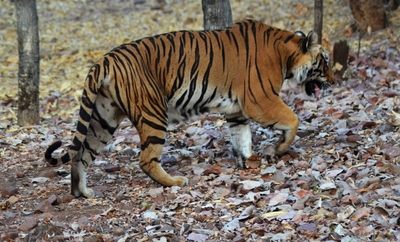
CENTRAL INDIAN HIGHLANDS WILDLIFE FILM FESTIVAL 2014
Theme: Landscape Dynamics & Biodiversity

CENTRAL INDIAN HIGHLANDS WILDLIFE FILM FESTIVAL 2014
Theme: Landscape Dynamics & Biodiversity


CREW was started in 1997 by senior journalist Lalit Shastri to raise awareness about various factors threatening environment, green cover and wildlife.
Lalit , who is now Editor-in-Chief newsroom24x7.com, was earlier
with The Hindu and The Asian Age. For last seveal decades, he has
continued to remain a crusader for the cause of environment and
wildlife. He shot on location the documentary “Last of the
Gharial”, produced by Assignment Earth. He has also been closely
associated with the episode ‘Nature & Conservation' with Serge
De Gheldere. This forms part of CANVAS documentary 'India for
beginners' –a Belgian production directed by award winning Director
Tom Ven der Velpen.
Lalit left a corporate job in 1984 and spent more than a year studying the causes that led to the poisonous gas leak at the Union Carbide pesticide plant in Bhopal. The research findings were published in a book form in 1986. The book titled "Bhopal Disaster—an eye witness account" was released by the then President Giani Zail Singh.
Lalit has been a member of the Board of Governors of the State
Tiger Foundation set up by the Government of Madhya Pradesh and
Madhya Pradesh Environment Council. He is also the founder member
of Child Rights Observatory Madhya Pradesh (CROMP).
Lalit is a Resource Person for Bhopalbirds
Lalit Shastri: Wiki page
Other Documentary Credits
"Pench—the Mowgli Land" on the Pench Tiger Reserve.
“Water Birds of Bhopal”- It is a 28 minute
bird-filled documentary on birds as excellent environmental
indicators.
COPYRIGHT : CREW, 2013
ALL RIGHTS RESERVED. NO MATERIAL FROM THIS WEBSITE MAY BE REPRODUCED IN ANY FORM WITHOUT THE PRIOR PERMISSION OF CREW.